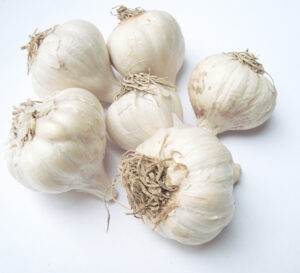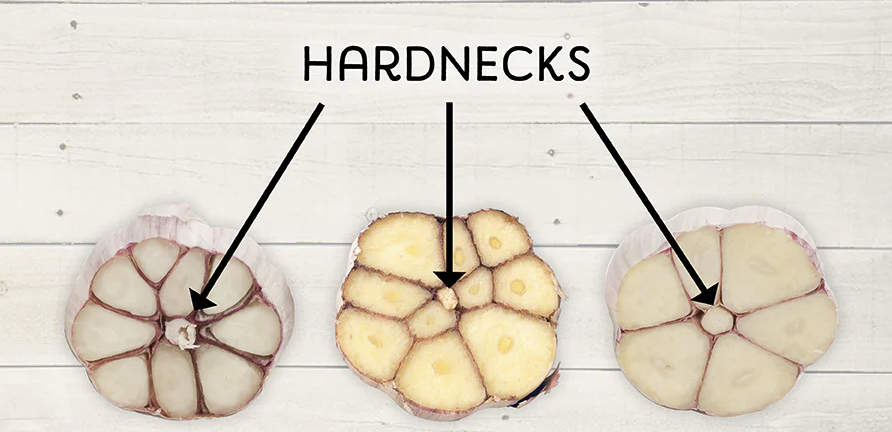Let’s Plant Some Garlic!
go.ncsu.edu/readext?1037110
en Español / em Português
El inglés es el idioma de control de esta página. En la medida en que haya algún conflicto entre la traducción al inglés y la traducción, el inglés prevalece.
Al hacer clic en el enlace de traducción se activa un servicio de traducción gratuito para convertir la página al español. Al igual que con cualquier traducción por Internet, la conversión no es sensible al contexto y puede que no traduzca el texto en su significado original. NC State Extension no garantiza la exactitud del texto traducido. Por favor, tenga en cuenta que algunas aplicaciones y/o servicios pueden no funcionar como se espera cuando se traducen.
Português
Inglês é o idioma de controle desta página. Na medida que haja algum conflito entre o texto original em Inglês e a tradução, o Inglês prevalece.
Ao clicar no link de tradução, um serviço gratuito de tradução será ativado para converter a página para o Português. Como em qualquer tradução pela internet, a conversão não é sensivel ao contexto e pode não ocorrer a tradução para o significado orginal. O serviço de Extensão da Carolina do Norte (NC State Extension) não garante a exatidão do texto traduzido. Por favor, observe que algumas funções ou serviços podem não funcionar como esperado após a tradução.
English
English is the controlling language of this page. To the extent there is any conflict between the English text and the translation, English controls.
Clicking on the translation link activates a free translation service to convert the page to Spanish. As with any Internet translation, the conversion is not context-sensitive and may not translate the text to its original meaning. NC State Extension does not guarantee the accuracy of the translated text. Please note that some applications and/or services may not function as expected when translated.
Collapse ▲(Taken from “Vampires Beware…” written by Ashley Grubb)
 If you have never grown your own garlic before, it can be a fun and rewarding crop that is easy to plant right in your own backyard. Garlic is a bulb made up of 10-20 individual cloves, which is planted in the fall and harvested in late spring. If you would like to grow your own garlic, here are a few suggestions.
If you have never grown your own garlic before, it can be a fun and rewarding crop that is easy to plant right in your own backyard. Garlic is a bulb made up of 10-20 individual cloves, which is planted in the fall and harvested in late spring. If you would like to grow your own garlic, here are a few suggestions.
Types of Garlic
First, there are two main types of garlic (hardneck & softneck). You may have noticed if you cook with fresh garlic that when you break apart a head sometimes there is a stick in the middle of the head that all of the cloves form around, and sometimes there is not. Garlic with this stick (Scape) in the center is called hardneck garlic.
Hardneck Garlic
Hardneck garlic typically has a stronger flavor than softneck, but is less common in grocery stores and garden retailers. Hardneck varieties are more cold hardy and produce superior yields than softneck varieties. Hardneck garlic varieties that perform well in North Carolina are “Chesnok Red” & “Music”.
Softneck Garlic
Softneck garlic lacks the “scape” within the center of the bulb and performs best in milder climates. Both Italian and Creole types are available, with the Italian being more cold hardy. You can differentiate between these varieties as the Italian bulbs have a white outer skin with a pink skin around each individual clove. Suggested softneck varieties include “New York White Neck” and “Italian Late”.

Notice the absence of the ‘scape’ in the center of this garlic bulb. With its white outer skin and pink skin surrounding each clove, this bulb is an Italian variety.
Planting Garlic
When planting garlic, plant individual cloves with the sharp top of the clove pointed upward, approximately 1-2” deep, with 4” between plants. Larger cloves will produce larger bulbs, so avoid planting thin cloves. Garlic must receive chilling hours to produce bulbs, so garlic needs to planted between September 15 to November 15. Garlic requires adequate soil pH (6.2-6.8), so ensure gardens areas have been tested and lime has been applied to reach these levels. Since garlic plants will be in the garden for several months, soil fertility is important. Apply fertilizer at planting, and additional nitrogen when plants reach 6” tall in the spring (March) and again in May. If you do not have a soil test before planting, then apply a complete fertilizer like 10-10-10.
Harvesting Garlic
Garlic is harvested when approximately 30% of its foliage is turning yellow (May-June). Pull a sample and ensure the cloves have separated but the skin is still attached. If you wait too long to harvest, then the cloves may separate widely and the skins will become loose. Garlic needs to be cured (dried) to have a long storage life. Bring cloves indoors or undercover and store loosely to allow good air flow. Once garlic heads are dried they can be braided or placed into mesh sacks for long term storage. You can remove tops and roots for ease of storage.
Pest Management and Care
Garlic is relatively free from pests but weed control is important. Hand weeding is probably the best option for control. Also, since bulbs form in the ground, good drainage is required to prevent rot. Remember to keep bulbs covered with soil during the growing so they are not exposed to the sun.
Additional Resources
For additional information about growing garlic or other garden plants, please contact Daniel Simpson at Daniel_simpson@ncsu.edu or 252-745-4121.




